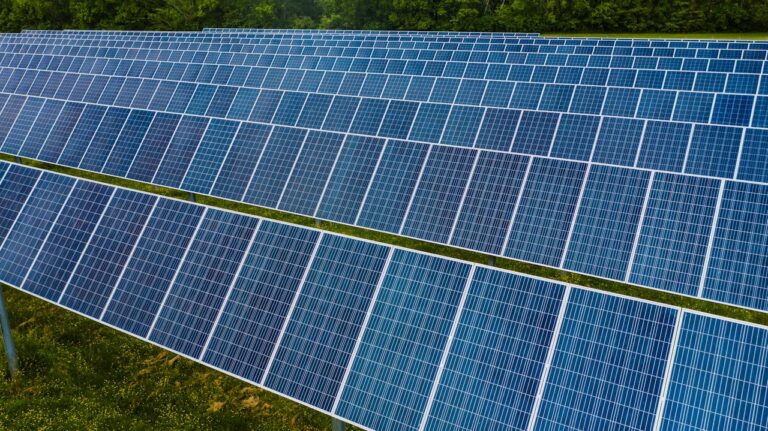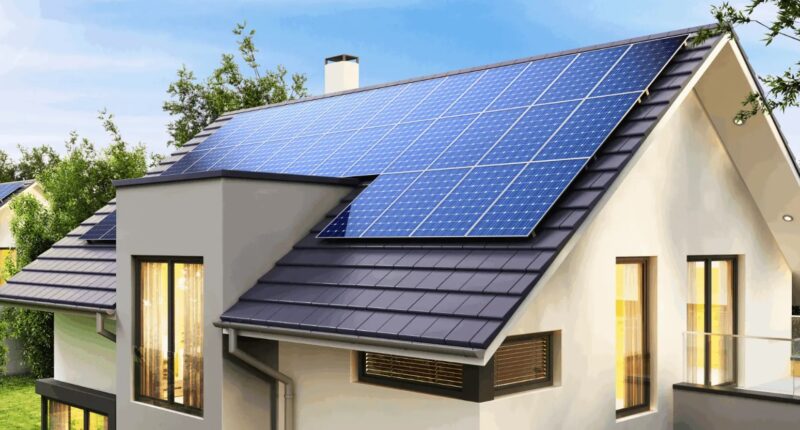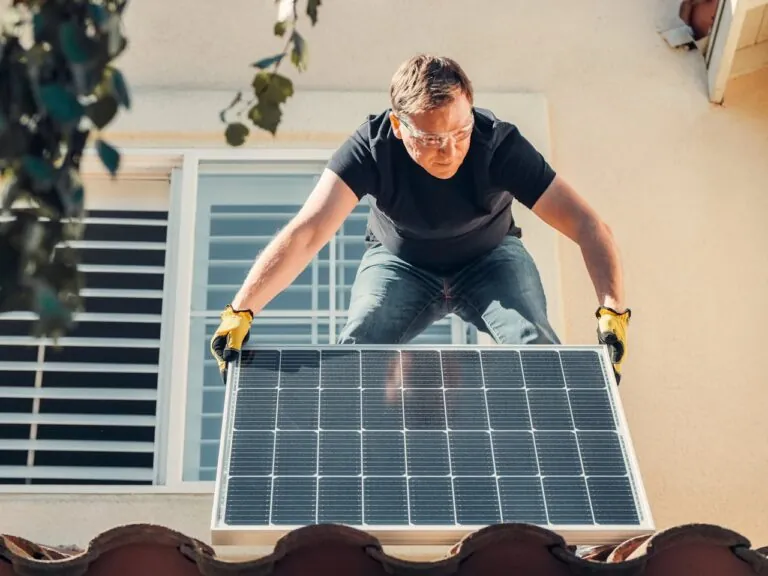When looking into solar panels, you’ll likely come across two main types: N-Type and P-Type solar cells. These are the key players in converting sunlight into electricity, but they work in slightly different ways.
N-Type cells are known for being efficient and long-lasting, while P-Type cells are more affordable and have been around longer.
Figuring out which one is better depends on what you’re looking for in terms of performance, cost, and durability.
Let’s break down the main differences to make things clearer.
| Feature | N-Type Solar Cells | P-Type Solar Cells |
|---|---|---|
| Efficiency | Higher, around 19-26% | Lower, around 18-20% |
| Degradation | No light-induced degradation | Suffers from light-induced degradation |
| Lifespan | Longer, up to 30 years | Shorter, up to 25 years |
| Cost | More expensive | More affordable |
| Market Availability | Less common but growing | Most common, widely available |
1. Efficiency
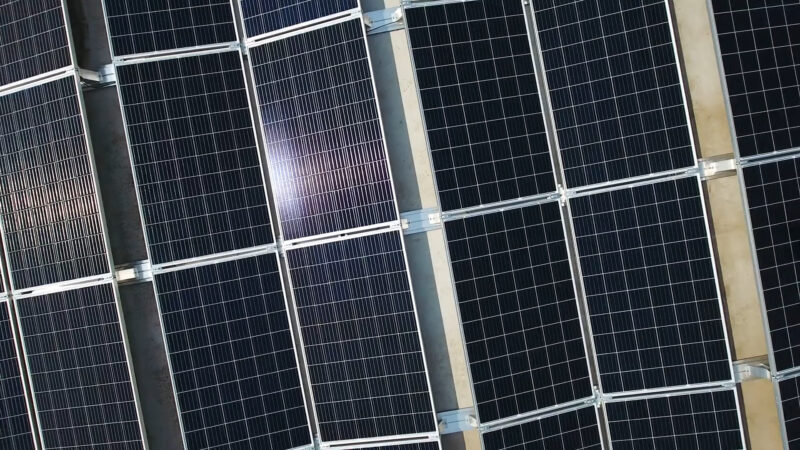
When it comes to turning sunlight into energy, some panels are simply better at the job. The first kind tends to outperform the second in terms of efficiency, reaching up to 25.7% in real-world conditions. In comparison, the other type typically tops out at around 23.6%.
N-type Si solar cells with passivating electron contact achieved an efficiency of up to 25.7%, representing the highest reported efficiency for both-sides contacted crystalline silicon solar cells. [1]
Why does this matter? Here are a few points that highlight why efficiency should be at the top of your list:
- Faster electron movement: The first kind of technology allows electrons to zip through the panel, creating more power.
- Less loss of energy: With fewer recombination issues (when energy is wasted), you get more bang for your buck.
- Better for tight spaces: If you don’t have much roof space, higher efficiency means you can generate the same power with fewer panels.
2. Degradation
One of the biggest factors to consider is how much performance drops over time. The first kind is immune to light-induced degradation (LID), which means it maintains its efficiency for much longer.
On the other hand, the second kind can lose up to 10% of its efficiency after exposure to sunlight due to the infamous boron-oxygen defect.
Here’s what this means for you:
- Long-term reliability: If you want a system that stays strong for decades, the first kind is the better choice.
- Less maintenance needed: With no LID, you won’t have to worry about performance dropping soon after installation.
- Budget considerations: While the second type may be cheaper upfront, the loss in efficiency over time might end up costing more in the long run.
Polymer bulk heterojunction solar cells, such as those based on ITO/PEDOT/P3HT-[60]PCBM/Al, experience accelerated degradation when exposed to ambient atmospheres, with the degradation rate increasing significantly at higher temperatures (e.g., 83°C) compared to inert atmospheres, highlighting temperature and atmospheric conditions as key factors in the degradation process. [2]
3. Lifespan
When investing in solar panels, how long they last matters a lot. The first type generally offers a longer warranty, often up to 30 years, while the other type is typically capped at 25 years.
Here’s why longevity is important:
- Fewer replacements: If you want to set it and forget it, the first kind will save you from worrying about frequent replacements.
- Better value over time: With a longer-lasting system, you’ll continue generating energy at a higher rate for years to come.
- Peace of mind: A longer warranty period means you’re covered for a more extended period, adding an extra layer of security to your investment.
P-type base silicon solar cells have been shown to be significantly more resistant to 750 keV electron damage compared to n-type base cells, with the primary damage mechanism being the reduction in minority carrier lifetime, leading to a much slower efficiency degradation under electron flux. [3]
4. Cost
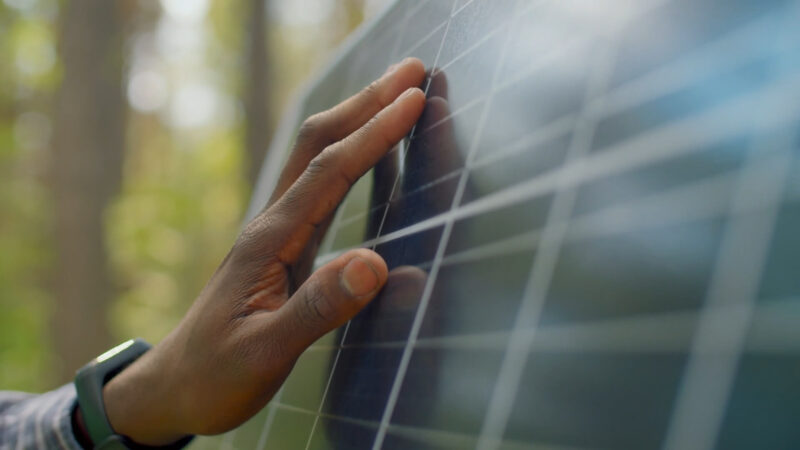
The upfront cost can be a major deciding factor when choosing between these two-panel types. The first type tends to be more expensive, with production costs of around 0.088 euros per watt, while the second type is generally more affordable at about 0.081 euros per watt.
Here’s what you should keep in mind:
- Higher upfront costs: If your budget allows, the first kind offers better long-term benefits in terms of efficiency and durability.
- Affordable alternative: The other option, with its simpler production, offers a more budget-friendly solution, especially for those with larger installation spaces.
- Long-term savings: Despite the higher initial price tag, the long-term energy output and lower degradation rate of the first kind may result in better value over time.
5. Market Availability
When it comes to availability, the second type dominates the market. This is because it has been around for much longer, and its production process is well-established.
The first type, on the other hand, is becoming more popular, especially for high-efficiency applications, but it remains less common.
Key points to consider:
- Easier to find: The second type is more widely available, making it the go-to option for most installations.
- Rising demand: The first type is gaining traction due to its better performance, particularly in extreme climates and for projects demanding high efficiency.
- Future potential: With ongoing technological advancements, the first type is expected to capture a larger share of the market in the coming years.
Recent news highlights significant investments in n-type production facilities, such as Comtec Solar’s 1GW/year n-type mono ingot and wafer plant in Malaysia, indicating a substantial increase in n-type wafer production capacity. You can download the whole analysis here.
6. Temperature Performance
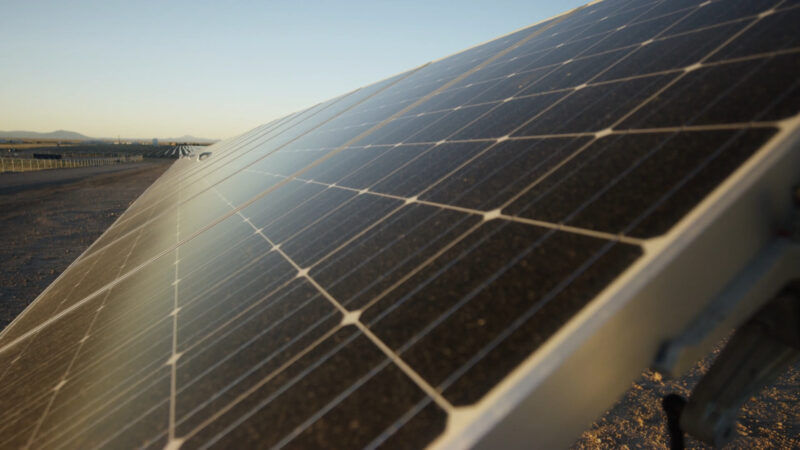
Efficiency can drop when panels heat up, and different types handle temperature changes in different ways. The first type performs better under high temperatures, with a lower temperature coefficient of -0.30% per degree Celsius, while the other type has a higher drop rate of -0.50% per degree Celsius.
Key points to consider:
- Better in hot climates: The first kind maintains its efficiency more effectively in hotter conditions, making it ideal for areas with high temperatures.
- Performance drop: The other type tends to lose more efficiency as temperatures rise, which could impact energy output in warm regions.
- Long-term impact: For installations in hotter climates, choosing the type with the better temperature coefficient could lead to significant performance improvements over the years.
Experiments show that solar cells can operate effectively at elevated temperatures between 100°C to 170°C without a significant loss in efficiency, providing potential for hybrid systems that combine solar-to-electric energy conversion with heat engines. This could result in an overall system efficiency of 30-40% when using a two-stage converter, where the solar cell serves as the high-temperature stage. [4]
7. Manufacturing Process
The production process plays a significant role in the cost and availability of solar panels. The first type requires a more complex manufacturing process involving high-purity materials, making it more expensive to produce.
Key points to consider:
- Complexity: The first type requires specialized techniques and high-quality materials, which drives up production costs.
- Efficiency gains: The more complex process for the first type results in better performance, particularly in terms of durability and efficiency.
- Mass production: The second type’s simpler process allows for wider availability and affordability, which is why it remains the most common option on the market.
N-type Silicon Solar Cells: N-type wafers undergo boron diffusion to create a p+ emitter, followed by amorphous silicon hydrogenated (a-Si) layers for surface passivation and silver-based metallization for current collection; known for high efficiency and resistance to light-induced degradation.
P-type Silicon Solar Cells: P-type wafers use phosphorus diffusion to form an n+ emitter, combined with SiO₂ or SiNx passivation layers and screen-printed silver/aluminum contacts; the standard, cost-effective choice in mass production but prone to light-induced degradation. [5]
FAQs
Do N-Type solar cells perform better in cloudy conditions?
Yes, N-Type cells perform slightly better in low-light conditions, such as cloudy weather. The higher electron mobility in these cells allows for better energy production even when sunlight is limited. This makes them a better option for areas that don’t get consistent sunlight.
Can you mix N-Type and P-Type panels in a single solar system?
Technically, you can, but it’s not recommended. Mixing different types of panels can result in mismatched performance, as each type has different efficiency rates, degradation patterns, and temperature coefficients.
This could lead to underperformance and reduce the overall efficiency of your solar system.
Why do P-Type solar cells have a thicker base?
P-Type cells have a thicker base because the base layer serves as the main absorber of sunlight.
A thicker base allows the panel to capture more sunlight, but it also leads to more recombination, which is why these panels are generally less efficient than their counterparts.
What are bifacial solar panels, and are they better with N-Type or P-Type cells?
Bifacial solar panels capture light from both sides, and they tend to work better with N-Type cells. This is because N-Type technology has higher bifaciality, meaning it can use light reflected from surfaces like the ground more effectively. P-Type cells are less efficient in bifacial setups.
Last Words
In conclusion, choosing between the two main types of solar panels depends on several factors, including your budget, energy needs, and long-term goals.
The first type, with its superior efficiency, durability, and resistance to degradation, is a great option for those willing to invest more upfront for long-term benefits. It’s especially ideal in hot climates and low-light conditions.
On the other hand, the second type offers a more affordable solution with widespread availability, making it a reliable choice for larger installations or those with tighter budgets.
References
- Armin Richter, Jan Benick, Frank Feldmann, Andreas Fell, Martin Hermle, Stefan W. Glunz, n-Type Si solar cells with passivating electron contact: Identifying sources for efficiency limitations by wafer thickness and resistivity variation, Solar Energy Materials and Solar Cells, Volume 173, 2017, Pages 96-105, ISSN 0927-0248
- Suren A. Gevorgyan, Mikkel Jørgensen, Frederik C. Krebs,A setup for studying the stability and degradation of polymer solar cells, Solar Energy Materials and Solar Cells, Volume 92, Issue 7, 2008, Pages 736-745, ISSN 0927-0248
- Richard V. Bobcock 1961 J. Electrochem. Soc. 108 1119. DOI 10.1149/1.2427967
- David Meneses-Rodrı́guez, Paul P. Horley, Jesús González-Hernández, Yuri V. Vorobiev, Peter N. Gorley, Photovoltaic solar cells performance at elevated temperatures, Solar Energy, Volume 78, Issue 2, 2005, Pages 243-250, ISSN 0038-092X
- The Technical and Economic Viability of Replacing n-type with p-type Wafers for Silicon Heterojunction Solar Cells
Chang, Nathan L. et al.Cell Reports Physical Science, Volume 1, Issue 6, 100069




